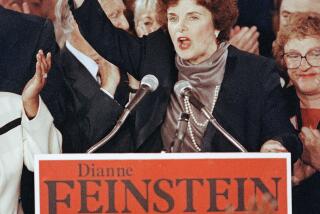What would six Californias look like?
Since California’s inception, its residents have been trying to break it apart. Wikipedia notes 220 such proposals since statehood in 1850.
More recently, supervisors in a handful of Northern California counties have passed secession resolutions. The band Pavement, citing cultural differences and fears of espionage, called for a breakup on the seminal 1992 album “Slanted and Enchanted.”
The latest whimsical plot for California meiosis comes from Silicon Valley investor Tim Draper, whose previous forays into initiative politics include a failed plan to allow for public school vouchers in 2000. He would divide California into six parts.
Forgetting for a moment that the plan seems to violate Article 4, Section 3 of the U.S. Constitution, we decided to see what these new states would look like, just for kicks.
Statistics provided by the company Political Data Inc. offer a glimpse.
The Oregon-border state of Jefferson, the least populous of the six new entities, with about 949,000 residents, would be more than 80% white, with Latinos making up just 15% of the population, and blacks just 1%, the smallest numbers of any of the six proposed states.
The largest state, coastal West California, which would stretch from Los Angeles to San Luis Obispo, with a population of more than 11.3 million, would be just one-third white, with Latinos (46%) Asians (13%) and African Americans (8%) making up about two-thirds of the overall population. Between them, those groups would constitute a majority in four of the six states.
If the six states existed in last presidential election, Mitt Romney would have narrowly carried Jefferson and Central California, while President Obama would have won wide victories in three of the other four states, while narrowly carrying South California, the state that would be made up of Imperial, Orange, Riverside, San Bernardino, and San Diego counties.
Gov. Jerry Brown’s plan to raise to temporarily raise sales and income taxes, Proposition 30, would have failed in Central California, Jefferson and South California while passing easily in the other three states. Proposition 32, the plan to restrict labor unions’ ability to raise money for political campaigns, would have failed in all six states.
You can read Draper’s entire proposal here.
ALSO:
Silicon Valley finding regulators uncomfortably close
Silicon Valley investor wants to split California into six states
More to Read
Start your day right
Sign up for Essential California for news, features and recommendations from the L.A. Times and beyond in your inbox six days a week.
You may occasionally receive promotional content from the Los Angeles Times.






